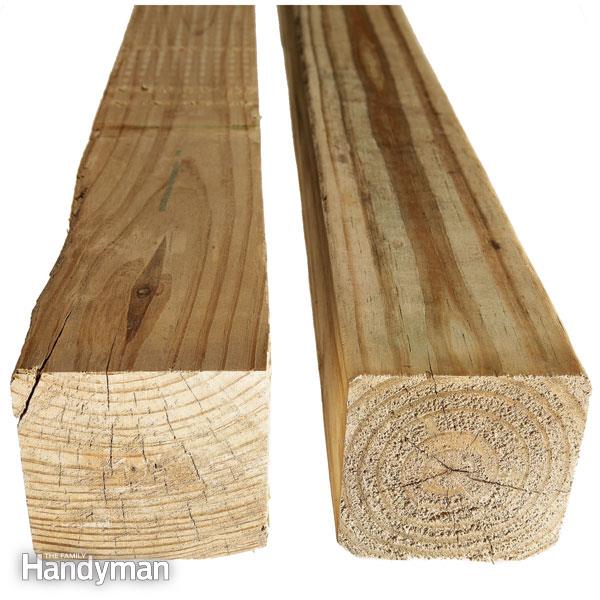Choosing pressure treated lumber by reading tree rings
Posted By RichC on January 7, 2016
Pressure-treated wood is a delightful product. It’s chemically protected to ward off insects and fungal decay. This protection increases the lifespan of the wood and makes it ideal for outdoor projects like decks. But here’s an important thing to keep in mind when picking pressure-treated 4x4s.
The chemical treatment process in question isn’t as effective on wood that is closer to the core of the tree. This is important because 4×4 posts are made as a by-product of plywood production and are often the center of a log, which is called the peeler core. This section of wood does not accept chemical treatment as well as the outer areas of the log and therefore is more susceptible to termites and other damage. You want to avoid pressure-treated posts that were in peeler core, and thankfully, you can do so by learning to read the wood.
When selecting 4×4 posts, check the end grain for wood that has been cut away from the peeler core. The growth rings will help identify these pieces. In the photo above, the post on the left is more desirable than the peeler core on the right, as the rings indicate that the post on the right was in the middle of the tree.
Check both 8-foot and 10-foot lengths of wood and choose accordingly. A few years down the line, you’ll be glad you did.
Source: Family Handyman and Popular Mechanics

Comments